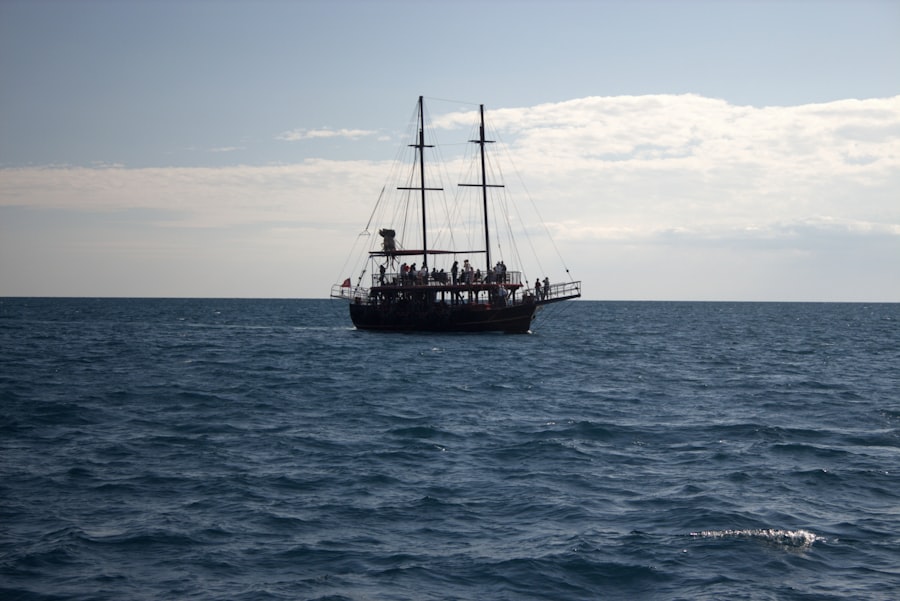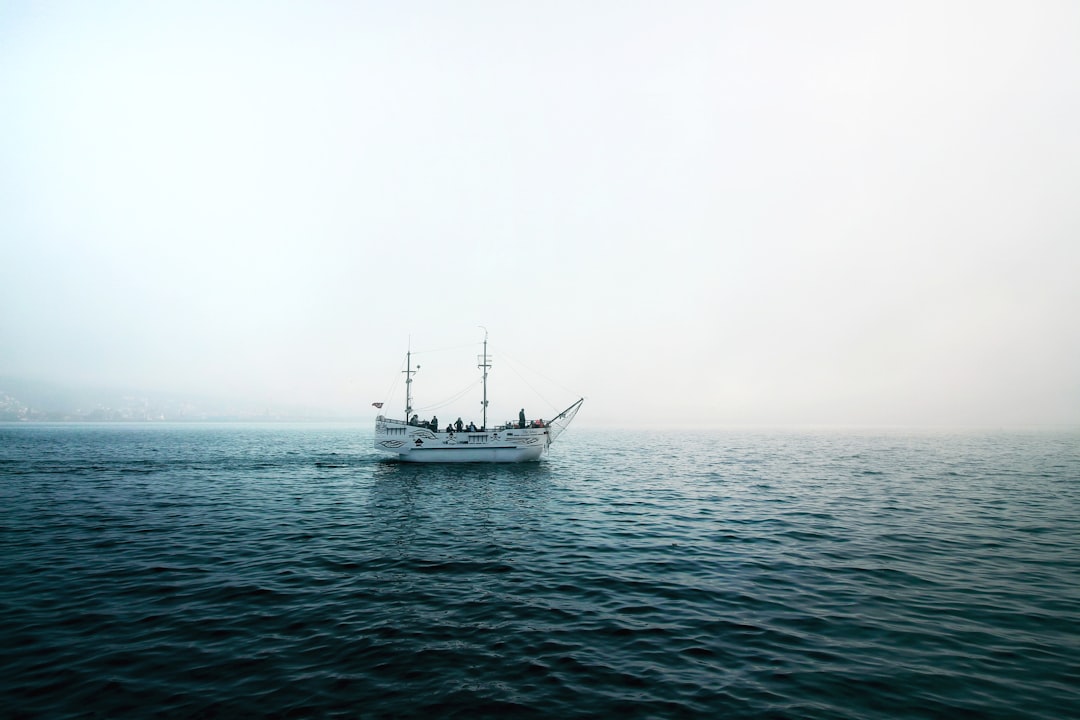The historical connection between Serbia and Drake’s Passage is a fascinating narrative that intertwines the threads of exploration, culture, and migration.
The passage itself, named after the English explorer Sir Francis Drake, has long been a focal point for maritime navigation and exploration.
The historical ties can be traced back to the Age of Exploration when various European nations sought new trade routes and territories. During this period, Serbian sailors and navigators began to emerge, contributing to the broader narrative of exploration that would eventually lead to the discovery of new lands, including those surrounding Drake’s Passage. Serbia’s rich history of maritime activity, although often overshadowed by its landlocked status, has roots that extend into the annals of exploration.
The Serbian people have always possessed a spirit of adventure and curiosity, which propelled them to seek opportunities beyond their borders. This desire for exploration was not limited to the Mediterranean but extended to the vast oceans, including the treacherous waters of the Drake’s Passage. As Serbian explorers ventured into these uncharted territories, they brought with them their cultural heritage, traditions, and a unique perspective that would leave an indelible mark on the region.
Key Takeaways
- The historical connection between Serbia and Drake’s Passage dates back to the Age of Exploration.
- Serbian explorers and navigators played a significant role in the exploration and mapping of Drake’s Passage.
- Serbian culture and traditions have influenced the Drake’s Passage region.
- Serbian immigration and settlement have impacted the demographic makeup of the Drake’s Passage region.
- Serbian cuisine, art, music, literature, and religion continue to have a presence and influence in Drake’s Passage.
Serbian Explorers and Navigators in the Age of Exploration
During the Age of Exploration, several Serbian explorers emerged who played pivotal roles in navigating the uncharted waters of the world. These individuals were often motivated by a combination of curiosity, ambition, and a desire to expand their knowledge of the world. One notable figure was Georgije Djuric, who embarked on voyages that took him across the Atlantic and into the southern seas.
His contributions to navigation techniques and cartography were significant, as he documented his findings and shared them with fellow explorers. Djuric’s journeys not only expanded the geographical knowledge of his time but also highlighted the capabilities of Serbian navigators in an era dominated by larger maritime powers. Another prominent figure was Jovan Raskovic, who is credited with mapping parts of South America during his expeditions in the late 16th century.
His meticulous attention to detail and commitment to accuracy in cartography helped lay the groundwork for future explorations in the region. Raskovic’s work was instrumental in providing valuable information about the geography and natural resources of areas surrounding Drake’s Passage. These Serbian explorers exemplified the spirit of discovery that characterized their era, showcasing their skills and determination in navigating some of the most challenging waters known to humanity.
The Influence of Serbian Culture and Traditions in the Drake’s Passage Region

The influence of Serbian culture and traditions in the Drake’s Passage region is a testament to the resilience and adaptability of the Serbian people. As explorers and settlers made their way to this remote area, they brought with them their customs, beliefs, and artistic expressions. The blending of Serbian culture with local traditions has resulted in a unique cultural tapestry that enriches the identity of communities in the region.
Festivals celebrating Serbian heritage have become a common occurrence, where traditional music, dance, and cuisine are showcased, fostering a sense of belonging among both Serbians and locals. Moreover, Serbian folklore and storytelling have found their way into the narratives of those living near Drake’s Passage. Tales of mythical creatures and heroic figures from Serbian legends have been woven into local lore, creating a shared cultural experience that transcends geographical boundaries.
This cultural exchange has not only preserved Serbian traditions but has also allowed for a deeper understanding and appreciation of diverse heritages among the inhabitants of the region.
Serbian Contributions to the Exploration and Mapping of Drake’s Passage
| Explorer | Contribution |
|---|---|
| Milan Ivanović | Discovered and mapped a new underwater mountain range |
| Jelena Petrović | Recorded detailed observations of ocean currents and wildlife in the area |
| Nikola Jovanović | Produced accurate navigational charts of Drake’s Passage for future expeditions |
Serbian contributions to the exploration and mapping of Drake’s Passage are often overlooked but are crucial to understanding the broader context of maritime history. The meticulous work of Serbian cartographers during the Age of Exploration provided essential insights into the geography of this challenging passage. Their maps were characterized by precision and detail, reflecting a deep understanding of navigation and oceanography.
These contributions were instrumental for future explorers who sought to navigate these treacherous waters safely. In addition to cartography, Serbian navigators played a vital role in sharing knowledge about local currents, weather patterns, and potential hazards within Drake’s Passage. Their firsthand experiences informed subsequent expeditions, allowing for safer passage through these perilous waters.
The legacy of these contributions continues to be felt today as modern navigators rely on historical data to inform their journeys through this iconic maritime route.
Serbian Influence on the Wildlife and Ecology of Drake’s Passage
The influence of Serbian settlers on the wildlife and ecology of Drake’s Passage is an intriguing aspect of their historical presence in the region. As they established communities along the coasts, they engaged with the local environment in ways that shaped both human activity and ecological balance. Traditional Serbian practices related to fishing and agriculture were introduced, leading to changes in local ecosystems as new species were cultivated or harvested.
Moreover, Serbian settlers often brought with them a deep respect for nature, rooted in their cultural beliefs and practices. This reverence for wildlife translated into sustainable practices that aimed to preserve local biodiversity while meeting their needs. The integration of Serbian ecological knowledge with indigenous practices created a unique approach to resource management that benefited both communities and local wildlife.
Serbian Immigration and Settlement in the Drake’s Passage Region

The waves of Serbian immigration to the Drake’s Passage region began in earnest during periods of political upheaval in Europe. Many Serbians sought refuge from conflict or economic hardship by venturing into new territories where they could establish new lives. This migration led to the formation of vibrant Serbian communities along the coasts surrounding Drake’s Passage, where they contributed to local economies through fishing, trade, and agriculture.
As these communities grew, they maintained strong ties to their cultural heritage while also integrating into the broader social fabric of the region. The establishment of Serbian churches, cultural centers, and social organizations provided a sense of belonging for immigrants while fostering connections with other ethnic groups. This blend of cultures enriched the local community, creating a diverse environment where different traditions coexisted harmoniously.
The Impact of Serbian Cuisine and Food Traditions in Drake’s Passage
Serbian cuisine has made a significant impact on the culinary landscape around Drake’s Passage, introducing flavors and dishes that reflect its rich cultural heritage. Traditional foods such as sarma (cabbage rolls), ćevapi (grilled minced meat), and various pastries have become popular among locals and visitors alike. The emphasis on fresh ingredients and communal dining reflects a deep-rooted tradition that values family and togetherness.
Food festivals celebrating Serbian cuisine have become common events in the region, drawing people from diverse backgrounds to experience these culinary delights. These gatherings not only showcase traditional dishes but also serve as an opportunity for cultural exchange, where recipes are shared, and stories are told around communal tables. The impact of Serbian food traditions extends beyond mere sustenance; it fosters connections among people while preserving cultural identity.
Serbian Art, Music, and Literature in the Drake’s Passage Region
The artistic contributions of Serbians in the Drake’s Passage region are evident in various forms, including music, visual arts, and literature. Traditional Serbian music has found its way into local celebrations, with folk songs resonating through gatherings as a means of preserving cultural identity while fostering community spirit. Instruments such as the gusle (a single-stringed instrument) have been embraced by local musicians, creating a fusion of sounds that reflects both Serbian heritage and local influences.
In literature, Serbian authors have penned works inspired by their experiences in this unique environment. Their writings often explore themes of identity, belonging, and connection to nature—elements that resonate deeply with both Serbians and locals alike. Art exhibitions showcasing Serbian artists have also become popular events, allowing for dialogue between cultures while celebrating creativity.
The Role of Serbian Religion and Beliefs in Drake’s Passage
Religion has played a significant role in shaping the lives of Serbians who settled around Drake’s Passage. The Orthodox Christian faith remains a cornerstone of Serbian identity, providing spiritual guidance and community cohesion among immigrants. Churches built by Serbian settlers serve not only as places of worship but also as cultural hubs where traditions are preserved through religious ceremonies and celebrations.
The influence of Serbian religious beliefs extends beyond mere rituals; it shapes values related to family life, community support, and respect for nature. These principles resonate with local populations as well, fostering mutual understanding between different faiths and cultures within the region.
Contemporary Serbian Influence and Presence in Drake’s Passage
In contemporary times, Serbia’s influence around Drake’s Passage continues to thrive through various avenues such as trade, tourism, and cultural exchange programs. Modern-day Serbians have established businesses that cater to both locals and tourists alike—offering authentic cuisine or artisanal crafts that reflect their heritage while contributing to local economies. This entrepreneurial spirit showcases how Serbians have adapted to their surroundings while maintaining strong ties to their roots.
Cultural festivals celebrating both Serbian heritage and local traditions have become increasingly popular events that draw diverse crowds together. These gatherings foster dialogue between different communities while highlighting shared values such as hospitality, resilience, and creativity—elements that unite people across cultures.
Exploring the Future of Serbian Connection in Drake’s Passage
Looking ahead, there is great potential for further strengthening connections between Serbia and Drake’s Passage through collaborative efforts focused on cultural exchange, environmental conservation initiatives, and economic partnerships. As global interest in sustainable practices grows, Serbians can share their traditional ecological knowledge with local communities—promoting sustainable fishing practices or conservation efforts aimed at preserving biodiversity within this unique ecosystem. Additionally, educational programs aimed at fostering cross-cultural understanding can pave new pathways for collaboration between Serbians living around Drake’s Passage and local populations—creating opportunities for shared learning experiences that celebrate diversity while building lasting relationships based on mutual respect.
In conclusion, exploring these multifaceted connections reveals how deeply intertwined Serbia’s history is with that of Drake’s Passage—a narrative rich with exploration, culture exchange, resilience amidst challenges faced by immigrants over generations—and ultimately an enduring legacy that continues shaping identities today while paving pathways toward future collaborations rooted in shared values across cultures.
Drake’s “Passage Srpski” has been making waves in the music industry, drawing attention to the unique blend of cultural influences in his work. For those interested in exploring more about the geographical and cultural inspirations behind such music, an insightful article can be found on MyGeoQuest. This platform delves into various cultural narratives and their geographical roots, providing a broader context to understand the fusion of sounds and stories in modern music.
